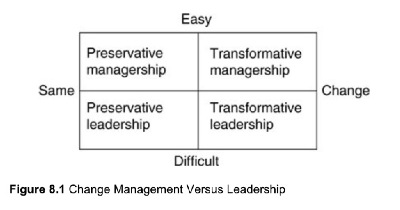BADM466 Unit 3 -- Class Meeting
TOPIC: Continuing on the many models and frameworks for managing change
Unit Learning Outcomes
- Analyze and understand the forces for change
- Distinguish between different types and terminologies of organization change.
- Appraise the effectiveness of change management efforts.
Materials & Tools
- Computer and other tech tools as per usual
Learning & Teaching Strategies
Readiness Work by Students for Class Meeting
- Memo #2 for Learning Journal
Sequence #1 Focusing Activity = 10 minutes
- Open ended question = Are political campaigns about convincing people to vote for your candidate, or a campaign simply to get people to vote?
Sequence #2 About the e-portfolio website = minutes
- https://eportfolios.capilanou.ca/
- Points-to-Ponder When Creating Your Portfolio:
- Be sure to illustrate self-reflection and growth in your chosen pieces.
- Content “proves” your talent and skills to an employer/audience.
- Combines all life-experiences into one collection.
- Be positive.
- Glass half-full, always.
- Demonstrate intellect in combining classroom learning with professional experience.
Source: https://www.bgsu.edu/business/business-career-accelerator-office/students/additional-resources/PORTFOLIO.html - Reflective practice in business and management professionals
1. Whenever it makes sense to do so, saunter
2. Write things down
3. Don't be busy, be present
4. Be curious, rigorous, and tenacious
5. Forget perfectionism
6. Assume you're making assumptions
Source: https://www.henley.fi/en/news-events/6-steps-to-reflective-practice-for-managers/ - Career Portfolio from UManitoba
https://umanitoba.ca/faculties/management/programs/undergraduate/coop/media/student-career-portfolio-guide.pdf
Sequence #3 Introduction to the Change Management Consultancy assignment =minutes
- Read aloud to the class Mr. Roger's fable, "The Story of Planet Purple."
pg. 39-41. - Use the discussion points and questions from Chapter 8.
Mitroff, I.I. & Mitroff, D.D. (2012). Fables and the art of leadership: Applying the wisdom of Mister Rogers in the workplace. Palgrave. Pg. 45-54. - Figure 8.1 Change Management Versus Leadership

Sequence #4 Health Break = 15 minutes
- Drumming transition activity = 5 minutes
- Moving away from the computer = 10 minutes
Sequence #5 Five models from Psychology = minutes
-
FAIRY TALE = The Kindly
Crone, or How to Get the Best out of People
Kets de Vries, M.F.R. (2016). Telling fairy tales in the boardroom: How to make sure your organization lives happily ever after. Palgrave. pg. 62-79 - Post-story reflection
The Motivation Test pg. 79-80.
Go to Kahoot.it
True = Yes
False = No - Five Change Management Models from Psychology
1. Maslow's Hierarchy of Needs
2. Hertzberg's two-factor
3. McClelland's theory of needs
4. Vroom's theory of expectancy
5. McGregor's theory X and theory Y - Quick activity -- The magic of encyclopedia to quickly learn concepts
"Wikipedia, a great place to start just not to end"
Sequence #6 Health Break = 10 minutes
-
Doing the Internal Work
Source: Kumar, V. (2011). Real Obstacles are Inside Us! In Marques, J. Dhiman, S. & Biberman, J. Stories to tell your students: Transforming toward organizational growth. Palgrave. pg. 156-157.
Three Open-Ended Questions from the book -
Kessler, E.H. (2010).
Chapter Six: Motivating and inspiring others. Management theory in
action: Real-world lessons for walking the talk. Palgrave. pg. 115-135
1. Appreciating the importance of motivation
2. Diagnosing peoples' motivational needs
3. Designing motivating jobs
4. Setting motivational goals
5. Establishing motivational expectancies
6. Motivating people through participation and involvement
7. Using rewards to motivate people
8. Motivating equitably
9. Increasing intrinsic motivation
10. Applying stretch targets
Sequence #7 Class Closure = 30 minutes
- Check in on prepping for the Tamarack Workshop worth 5% happening live during next week's class.
-
What motivates you to get
your homework done?
Draw it using Pear Deck
Go to joinpd.com
Student Learning Activities After Class Meeting
Passive Learning (e.g. reading, watching, etc.)
- Finish all the prep work required for next week's Tamarack Workshop
- Skim read = Reeves, D., & Dixon, J. K. (2016). Chapter 6: Change. From Leading to succeeding : The seven elements of Effective Leadership in education (a change readiness assessment tool for school initiatives) (1st ed.). Solution Tree.
File available in eLearn
Active Learning (e.g. reflective learning journal, assignments, studying, etc.)
- Keep working on your Informational Interview (10%) assignment
- Keep working on your microcredentials
- Complete Memo #3 for Learning Journal = 3%
Reflecting on how today's class went, report and describe what you contributed to the success of the last 3-hours.
1. What did you contribute to the shared learning experience and how did it aid the flow of the class?
2. How has your answer been shaped by your previous experiences as a student?
3. If your previous learning experiences didn't prepare you to be an active contributor in a remote, synchronous class meeting, what do you identify as needing to improve in this area?
4. What's your plan for the next class meeting? - Posted to the Forum to announce your choice for Book Infographic assignment worth 10%.
These infographics will be presented at the start of the next class after it was due.
So, you'll also want to post to the Forum to announce the order of Book Infographic presentations on March 17th.